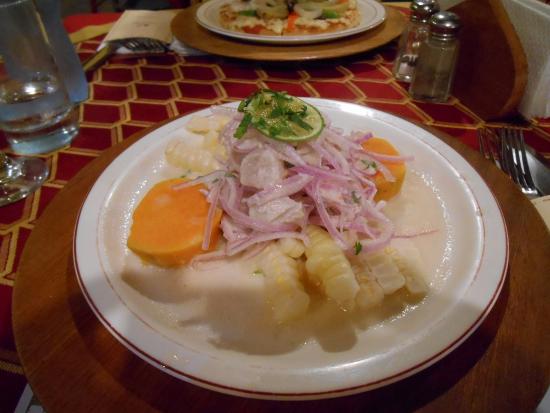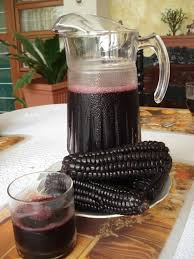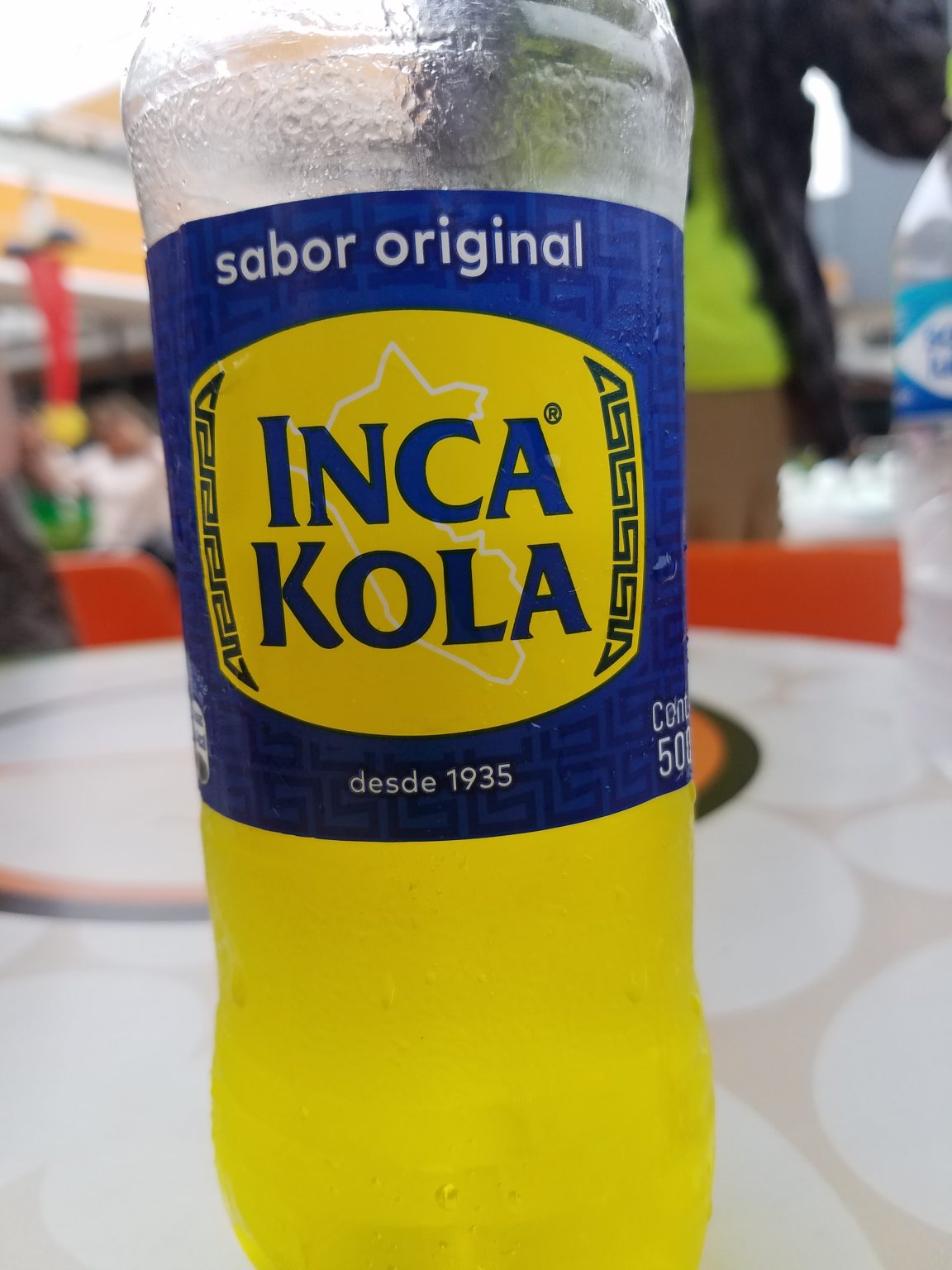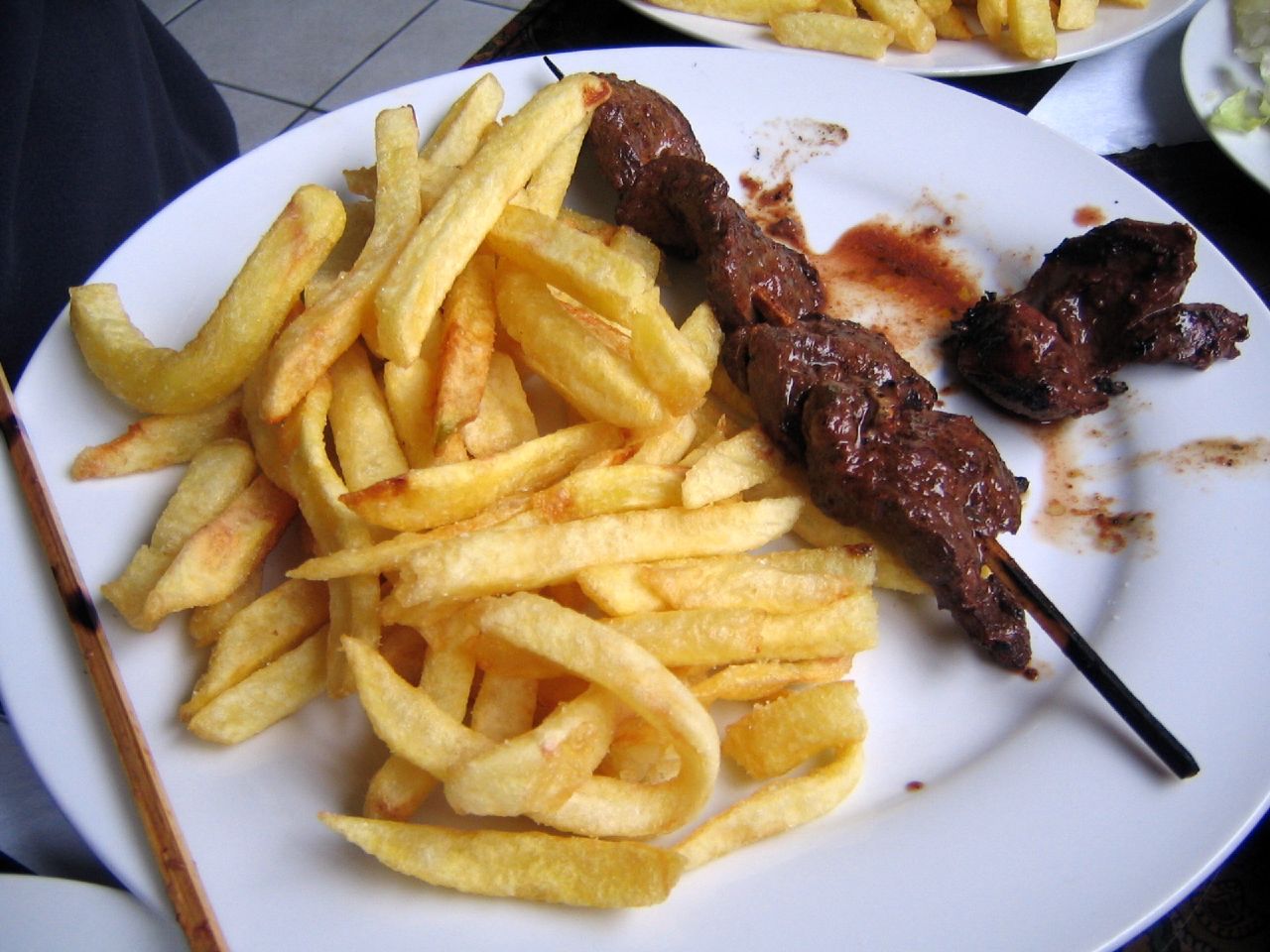Our resident food critic and Honors Passport: Peru student Dennis Mitchell walks us through the tastes of Peru in a multi-part series beginning in Lima.
During my time in Peru, I have received a certain reputation. A reputation as someone who will try anything put in front of them on a plate. My role is to be a tour guide of flavor for so too will we navigate the metaphorical ‘cocina peruana’
Lima: In Lima, Peru’s capital, there are two foods and two beverages which stick out in my mind: ceviche, anticuchos, Inca Kola, and chicha morada.
 Ceviche is an absolute classic in Peru. Even in the highlands, hundreds of miles from the coast, you can see signs for “cevicherias” It is mélange of raw sea food, varying in ingredients depending on where you are, but generally containing kalamari, octopus, and oyster heavily seasoned in local herbs and spices including aji and onion. Historically, ceviche traces its roots to the indigenous people of coastal Peru who often carried the seafood they caught altogether in a single pouch. Some of them would eat on the way back to the village, thus ceviche was born.
Ceviche is an absolute classic in Peru. Even in the highlands, hundreds of miles from the coast, you can see signs for “cevicherias” It is mélange of raw sea food, varying in ingredients depending on where you are, but generally containing kalamari, octopus, and oyster heavily seasoned in local herbs and spices including aji and onion. Historically, ceviche traces its roots to the indigenous people of coastal Peru who often carried the seafood they caught altogether in a single pouch. Some of them would eat on the way back to the village, thus ceviche was born.

Nothing washes ceviche down better than a glass of chicha morada. Chicha morada is a drink going back to pre-Inca times. Originally it was an alcoholic beverage fermented in saliva. Do not worry! The kind of chicha that is found everywhere in Peru is 100% alcohol-free, and perhaps more importantly, 100% spit-free as well. The flavor is a rather simple one. It has a general, soft, and natural sweetness to it that separates it from, say, fruit juice. The taste is admittedly not for everyone. I would, however, recommend giving it try. Caution: Many people sell this stuff on the streets in plastic bottles. In general do not buy food off of the street. Get it at a restaurant; they serve it all throughout Peru.
I had read about a dish called anticuchos before I had left the U.S. It hit me just exactly what anticuchos were when I tried explaining it to my waiter. I asked for the “corazon de la vaca.” I asked for the cow’s heart (though other meat can be used, as I learned later). That’s right. In Peru, no part of the animal is wasted. In fact, one Peruvian told me that it was the best part. After trying it, I was inclined to agree. The pieces of the heart are cut into strips and skewered. They are then glazed in a tangy marinade and grilled. Since cows arrived in Peru with the Spanish, it can be assumed that this dish arrived with them. For those not faint of heart (mandatory pun), this Peruvian dish is an absolute must try for anyone going to Peru. A note: French fries are a very common side dish in Peru, just in case you think the food was too exotic.
 From the minute I got out of the airport this stuff was everywhere. It is called Inca Kola and unsurprisingly was not drunk by the Inca. It is a soft drink invented in 1935 by a Brit living in Peru. The taste is rather unique and everyone that has tried it has described it in different ways. It is marketed as “The taste that makes Peru unique.” A correct assessment, the drink tasted to me at first as a softer kind of fruit soda, tasting a little of pineapple and a little of banana. It has been compared to cream soda by some and bubblegum soda by others. The flavor actually comes from a plant oil called lemon verbena. Nevertheless this is a safe drink and one I personally enjoy. In Peru, it is even served at rather high end restaurants. If you’re ever in Peru, try a bottle and give it a taste.
From the minute I got out of the airport this stuff was everywhere. It is called Inca Kola and unsurprisingly was not drunk by the Inca. It is a soft drink invented in 1935 by a Brit living in Peru. The taste is rather unique and everyone that has tried it has described it in different ways. It is marketed as “The taste that makes Peru unique.” A correct assessment, the drink tasted to me at first as a softer kind of fruit soda, tasting a little of pineapple and a little of banana. It has been compared to cream soda by some and bubblegum soda by others. The flavor actually comes from a plant oil called lemon verbena. Nevertheless this is a safe drink and one I personally enjoy. In Peru, it is even served at rather high end restaurants. If you’re ever in Peru, try a bottle and give it a taste.

